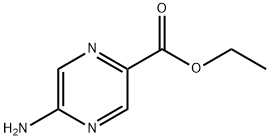How does the newly - developed layered self - supporting molecular sieve catalyst achieve efficient activation and cleavage of carbon - carbon bonds in polyethylene at low temperatures (240°C) without precious metals, hydrogen, or solvents? Compared with traditional high - temperature or high - cost methods, what are the key advantages of this catalyst in terms of reaction mechanism and energy consumption?What specific role does the "self - supplying hydrogen" mechanism play in improving the efficiency and economic viability of polyethylene recycling? Since the content of branched alkanes in the obtained high - quality gasoline is nearly twice that of commercial gasoline, how does this characteristic affect the fuel performance and environmental impact of the recycled gasoline?
The Science Behind Polyethylene Recycling:How Efficiently Can We Convert Plastic Waste to Fuel?
Related Encyclopedia
Related Products More >
-
- 63231-66-3
- CNY equest For Quotation
-
- USD 20.0000
- 25kg
-
- USD 15.0000
- 25kg
-
- 9004-96-0
- equest For Quotation
- 50
-
- 9004-96-0
- equest For Quotation
- 200kg
-
- 9002-98-6
- equest For Quotation
- 1kg




 沪ICP备2021018848号-5
沪ICP备2021018848号-5

At a low temperature of 240°C, this catalyst can precisely "target" the carbon - carbon bonds of polyethylene. Usually, carbon - carbon bonds are extremely stable and hard to break, but these three - coordinated aluminum sites can interact with polyethylene molecules, making the carbon - carbon bonds "weaker" and thus easily activated and cleaved. What's more, the whole process doesn't need additional hydrogen, precious metals, or solvents, greatly simplifying the reaction conditions.
Compared with traditional methods, which require temperatures above 400°C, not only consuming a lot of electricity but also possibly using precious metals, driving up costs. This new catalyst can react at low temperatures, significantly reducing energy consumption. Without precious metals, the cost is also reduced. And without relying on additional hydrogen sources and solvents, it also eliminates many troublesome operation steps and potential pollution risks.
This not only saves the cost of an external hydrogen source but also makes the reaction simpler and safer. Without the risks associated with hydrogen transportation and storage, it also reduces investment in related equipment. And since there's no need for an external hydrogen source, the entire recycling process is more efficient. Under the conditions of 240°C, without precious metals, hydrogen, or solvents, the recovery rate of high - quality gasoline prepared from waste polyethylene plastics can reach 80%, greatly enhancing economic viability.
Regarding the high content of branched alkanes, branched alkanes can increase the octane number of gasoline. The higher the octane number, the better the anti - knocking performance of the gasoline, and the car engine can operate more smoothly and efficiently. So this recycled gasoline performs better in terms of fuel performance than regular gasoline.
In terms of environmental impact, more efficient combustion means fewer incomplete combustion products. For example, emissions of pollutants such as carbon monoxide and hydrocarbons will decrease, which is more environmentally friendly. However, a more comprehensive assessment of the specific environmental impact is still needed. But at least for now, this is a great advantage.